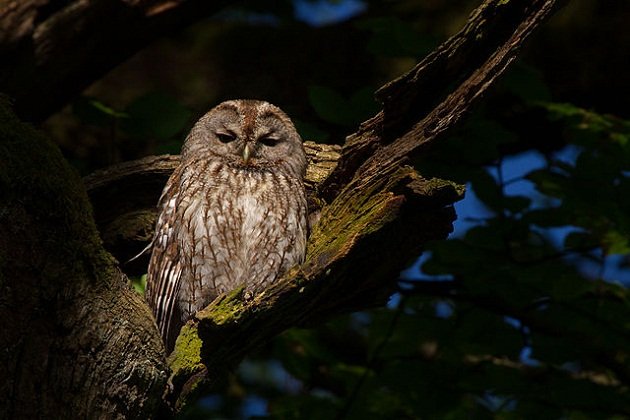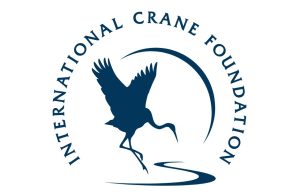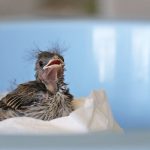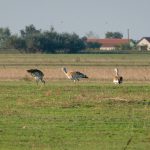
It is a cold night in early March and the young moon barely visible through the thick branches of the oak forest. Two of us are sitting in a car parked by the side of the road, all four indicators blinking just in case of some drunk driver. Not that there is much traffic and yet, we do get three to five cars in the fifteen minutes that we spend on each census point.
A portable speaker is placed on the top of the car, playing Tawny Owl calls from a smartphone. In a very short time, we get two responses, two birds calling from opposite directions. Quickly, we stop the playback to avoid further disturbance, I write down that they were both males, guesstimated distances and the azimuths from which they responded and we move to the next point.
What is wrong with this picture?
Some will say “nothing” and in this particular case I am willing to agree. Others might say “disturbing territorial birds with playbacks” and in this situation I would partially agree, while in many others I would fully agree.
So, what makes this playback use different from any other? Although we do enjoy it immensely, we are not doing it for fun, but to gather information on distribution, habitat choice and density of breeding pairs of owls for the first national and second pan-European atlas of breeding birds. As long as we do not harm birds, I think it is justifiable to use playback for scientific reasons.
Driving through the forest in darkness, we had a Tawny Owl flying across the road. We break, play the call and get the response of a female. Since only male responses counts as a breeding pair, we continue with the playback and she comes to a branch right above the car to investigate. I cannot resist but turn my headlamp on – what a gorgeous girl! Undisturbed by the light, after some time she flies away to a branch maybe 50 ft from us, I turn my torch towards it – two! Two of them are sitting on the same branch, finally we do get another response, from the male, and turn the playback off immediately.
Personally, I do not feel comfortable using playback in casual birding (is there such a thing as “casual birding”?). I find it to be cheating, but okay, I am old school. In my rock climbing days, I used no bolts that drill the rock and stay in it permanently, but left the cliff faces as pure as I found them. Was it the right way? Well, that way left me with a broken spine, so it might not necessarily be the best way, but – more importantly – it was my way.
Reinhold Messner is a mountaineering legend, among other reasons, because he was the first man to climb the fourteen highest peaks without additional oxygen. When asked why, he said that he finds climbing a 26,000 feet mountain with oxygen tanks cheating, because one is faking 19,000 feet.
We also had one somewhat tricky situation. Very quickly, we had a response by female who came to see those other owls away and landed in a tree above us. And we didn’t stop the playback because we were hoping to get the male to respond, too. The female was agitated, and while the research protocol does not accept a single female as a pair, I am convinced that she was defending her nest, while the male may have been away hunting. In this situation, we played the call for 15 minutes (with pauses) and then left. This I didn’t like and neither did she.
Still, using playback to gather scientific data is acceptable to me, while doing the same just for the fun of it is – in my eyes – cheating. My choice is rather to dip the bird, than use too much technology. But, as I said earlier, that is my way.
After this bold statement, I should be honest enough to say that I am not an absolute purist and rarely, perhaps once or twice per year, I do try playback. At least, it is my last resort, never the first.
Where do you stand with playback use?
Photo by Andreas Trepte www.photo-natur.de / Wikimedia Commons











I stand in much the same corner as you: to me, it is cheating and an unnecessary disturbance. For scientific purposes, I am fine with it. I do not use playback at all and therefore don’t even have the technical equipment. However, during my Surveys of forests in Indonesia, I often felt it would have been more practical and also ethically okay to use playback.
Invaluable, or at least unavoidable, as a tool in systematic monitoring.
Drives me up a w a l l when I’m birding, though. I’m not convinced that it bothers the birds all the time, but it certainly diminishes the experience for the birders.
Not users of playback at all and content with what we do see or hear any day! Easily pleased when it comes to birds! 🙂
In Costa Rica, quite a few guides are against it because they have seen so many other guides go overboard with it (although some of those same guides against it won’t hesitate to whistle like a quetzal, essentially another form of playback). It’s a big temptation on tours in tropical forest when you have just one or two chances at many species that probably won’t be seen otherwise. I do use playback on occasion but only in places where it is not commonly used, only sparingly so, and with common sense- never on endangered species, and only enough for a response, not constant playback that obviously stresses the bird.
Birding legend Alvaro Jaramillo made an interesting point here (copy-paste from FB):
“From what I have gathered over the years, if owls are played to consistently during the breeding season what we detect as birders is a decrease in response. This may seem like they have been “scared off” a territory, but from my knowledge this does NOT happen. The owls maintain territory, and for all we know their reproductive success is entirely unaltered. The birds are much more resilient than we think. Playing voice to them in the breeding season likely does little if it is not persistent. If it is persistent, it likely alters their behavior by decreasing response to the voice (particularly if it is the same tape over and over that various birders play). The question is what is good form, and what is erring on the side of caution etc. This is where it gets problematic.
I think if an owl territory is going to be encountered and played to by only a birder or two during a season, likely no problem. What happens if it is consistent? How about if it also intrudes on the birding of other people, that is to say it is more likely that a birder will hear tape rather than a real owl at a well known spot? I have no answers to that. Some suggest that for a widespread and relatively common population, why not have a “sacrificial” pair that everyone goes to look at and play to, leaving all of the rest alone and in peace? There is something to that argument.
I am not arguing that it is OK to play tape willy nilly, but that it is nuanced, and just like with birders and owl photography there are ok ways to do it, and bad ways to do it. I also wish that birders that do playback would be able to take a course on how to do it, playing tape over and over on a non stop loop is certainly not how one does it.”
I spent the last evening with Barn, Tawny and Long-eared Owls and tonight I can hear the first European Scops-Owl of the season calling from the dark – four of a kind!
I agree that using playback when birding for fun feels like cheating but using it for scientific reasons is okay. That being said, I don’t necessarily think that it is harmful to birds or wrong to do it for non-scientific reasons. I think which species are involved, the time of year, the frequency it is done in the same place, and various other conditions need to be considered each time someone considers doing it. I think that playing a recording for five minutes to get a bird to show itself can be far less damaging than tromping around in its habitat for two hours hoping to see it while possibly scaring it out of going about its normal activities.
When I first started birding, I regularly used playback just for fun, and my budding life list benefited from it.
I don’t know when my opinion changed, but it probably coincided with the time when I shifted from conducting ecological and conservation research, where birds are seen as “species”, to my current focus on behavior research, where birds are viewed as “individuals”. One needn’t delve very far into the literature to find some rather unexpected variables that have been shown to affect individual reproductive success. Noise pollution comes to mind as relevant here: if noise can reduce reproductive success, is it a stretch that conspecific playback might as well? It seems that more research is needed.
Alvaro’s point that owls tend not to be scared off territory is perhaps justified, but this does not mean that their reproductive success has not been affected. That cannot be known without tracking nest success and adult survival, and I am not aware of a study that has done this. In the absence of evidence one way or another, are we as birders okay with the possibility that playback may lead to negative outcomes for the very birds we aim to protect and appreciate?
I am not opposed to all uses of playback: generally I support its use in scientific research, and oppose it for birding. I went on a birding trip recently where the leader did playback at every roadside stop – in this case for sparrows in a grassland habitat. The fact is, if we had been willing to wait a minute, the sparrows would probably have made themselves visible, and we would have gotten decent looks. Would the looks have been as nice as with playback? No, probably not, but the birds were all extremely agitated the entire time we were there with the speaker blasting. I have learned to accept that without playback I may not get as great a look, and may miss some birds. So what?
I have come to appreciate the greater challenge associated with birding without playback: it requires skill and patience. If the goal is simply to see birds up close, why not just go to the zoo?